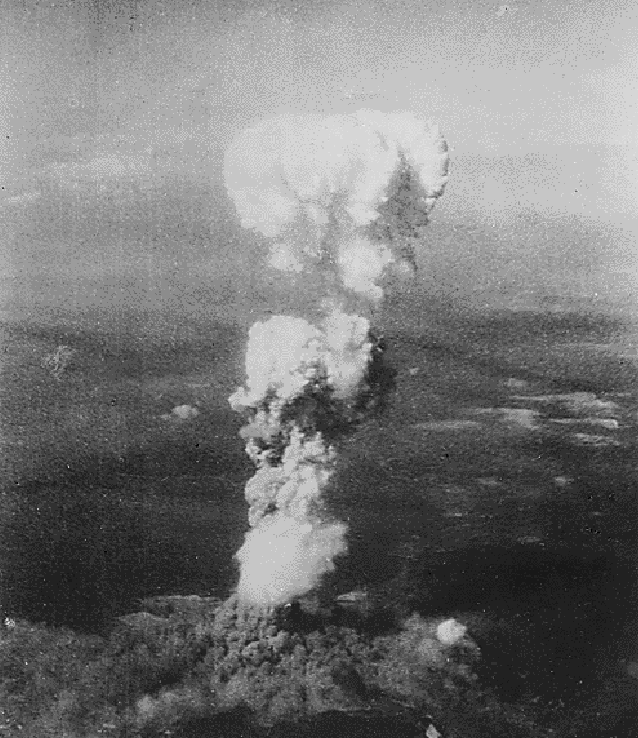
The project was led by physicist Robert Oppenheimer and General Leslie R. Groves. The best U.S. scientist, engineers and mathematicians were recruited to bring “The Manhattan Project” into gear. European scientist Albert Einstein, Enrico Fermi and Leo Szilard were brought in to also help out.
Six years later two atomic bombs were created, “Little Boy” and “Fat Man”. An implosion-like prototype was made to test the bomb in how much destruction it could actually cause. July 16th 1945, the nuclear device was detonated at the Trinity Test in New Mexico’s Alamogordo Bombing and Gunnery Range. It was a truly magnificent sight to behold.
Originally the bomb was to be used on Nazi Germany to end the war. But due to Hitler’s suicide the war was brought to an abrupt end. The Red Army had driven Hitler’s armies back into Western Europe. Hitler realized his armies were now at the mercy the Red Army and the Western Allies; the Nazis were going to lose the war. Hitler put a pistol to the roof of his mouth and pulled the trigger.
Despite the fact that the war with Germany was now over, the U.S. was still at war with Japan in the Pacific war. The Japanese were growing more persistent to win the war. Although how clear it was that the Japanese wasn't going to win this war the Japanese still continued to go to great lengths to defeat the U.S. army. They resorted to their Kamikaze pilots, Japanese suicide bombers. America went forward to invade Iwo Jima and Okinawa, two islands of great importance to the Japanese. There was great loss of soldiers for the U.S., still with a stroke of luck they were able to defeat the Japanese during both invasions. They won over Iwo Jima in March and Okinawa in Mid-June. American bombers destroyed Japanese cities and submarines cut off Japanese imports.
On the 11th of July, the Allied leaders met in Potsdam, Germany to discuss future plans for Germany and the further demand for unconditional surrender of all Japanese forces. It was exclaimed that the alternative was, "Prompt and utter destruction". The Japanese refused to respond to their proposition. In return the B-52 bomber, Enola Gay dropped the first atomic bomb, “Little Boy” on the town of Hiroshima on August 6, 1945 killing 90,000 - 166,000 people. Three days later they dropped “Fat Man” on the town of Nagasaki and killed 60,000 - 80,000 people. The destruction brought upon both cities was uncanny. Japan was brought down to their knees. September 2nd 1945 Japan agreed to surrender unconditionally to the United States.
No comments:
Post a Comment